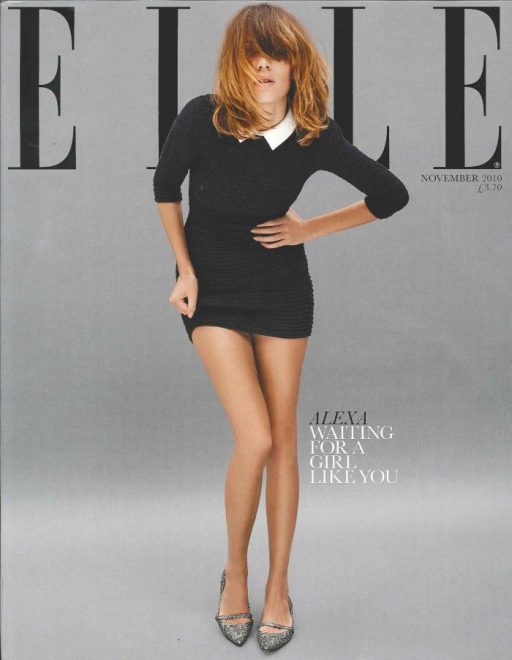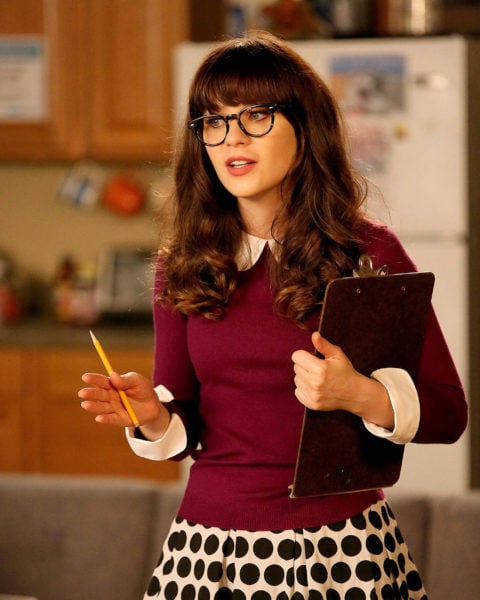Tumblr’s Twee Aesthetic Is Back But Let’s Leave The Toxicity In 2010
The Tumblr-driven subculture has returned on TikTok, but some parts of it should be left in the past.

Dust off your ukulele and your American Apparel tube socks because 2010s Tumblr aesthetics are back and suddenly dressing like the Wish.com version Zooey Deschanel is cool again.
Fashion is cyclical and we’re just coming to the end of the noughties resurgence, which means that we’re just moments away from the 2010s trends we poorly executed in our teen years coming back.
Much like the resurgence of Juicy Couture tracksuits, Von Dutch trucker hats and the general bimbo aesthetic of the 2000s that has dominated fashion over the past few years, cult-fave Tumblr aesthetics like indie sleaze, grunge and twee are making their comeback.
But god, oh god, please can we leave the galaxy leggings for the history books?
The Tumblr Era
If you participated in the Tumblr era, you’d know that there were countless subcultures to immerse yourself in. From angsty teens reblogging My Chemical Romance lyrics scribbled on public bathroom mirrors to hipsters punching out the lenses of those black 3D glasses you picked up after watching the Tim Burton Alice In Wonderland film at your local Hoyts, there were enough subcultures for everyone to live their best “misunderstood” teenage life.

But one trend promises to make a stronger return than the rest: twee.
It’s Zooey Deschanel’s World And We’re Just Living In It (Again)
Undoubtedly thanks — in part — to Taylor Swift’s re-release of Red, which was the soundtrack to her own twee era, basing your aesthetic and personality on Wes Anderson films, Peter Pan collars and Alexa Chung-esque shift dresses is suddenly cool again.

By definition, twee is anything “excessively or affectedly quaint, pretty or sentimental”, which — in terms of an aesthetic — is essentially cosplaying as any character Zooey Deschanel has ever played (yes, including that one time she was blonde and starred in Elf).
“You’re Twee if you like artisanal hot sauce,” The Atlantic’s James Parker wrote in 2014. “You’re Twee if you hate bullies […] Twee’s core values include ‘a healthy suspicion of adulthood’; ‘a steadfast focus on our essential goodness’; ‘the cultivation of a passion project’ (T-shirt company, organic food truck); and “the utter dispensing with of ‘cool’ as it’s conventionally known, often in [favour] of a kind of fetishisation of the nerd, the geek, the dork, the virgin.”
While the aesthetic dates back to the 1980s, it really found its footing in the mid-2010s, when it was deemed “the most powerful youth movement since punk and hip-hop” — according to journalist and cultural observer Marc Spitz in his 2014 book on the topic.
To embody the twee aesthetic meant you’d never be caught dead without a quirky patterned shift dress (bonus points if it was cat print) layered over a collared shirt with a cute cardigan and some cat-eye glasses that were barely visible under your thick bangs. You’d tell everyone about how much you loved The Perks Of Being A Wallflower — the book, not the movie because you liked it way before then — and your Tumblr was filled with Wes Anderson quotes you’d written on your vintage typewriter while listening to shitty ukulele covers of popular songs.

Zooey Deschanel, Alexa Chung and Zoella were the queens of twee and while you’d never admit that your style was a carbon-copy of a popular celebrity, you secretly wanted to be them.
TweeTok:
The resurgence of twee — and other Tumblr subcultures — was first predicted by trend forecaster and fashion writer Mandy Lee, who also notes that “clowncore” will be big in 2022.
But while clowncore may not have taken off just yet, twee certainly has — with a huge spike in Google searches for topics like “twee” and “twee fashion” in the last week alone. Not to mention, the trend has absolutely blown up on TikTok, with users sharing their 2010s twee to the sound of twee anthem Why Do You Let Me Stay Here?
The trend has taken off so much that even Zooey Deschanel herself has jumped on the bandwagon.
It’s Not All Ballet Flats, Cardigans And Rainbows
As is the case with most of the trends we’ve seen revived in recent years, twee culture is shrouded in nasty things (no, not just the ballet flats from Cotton On that gave you blisters).
In an incredible display of irony from the trend that denounced the idea of being conventionally “cool”, the twee aesthetic was just as dominated by skinny, white, cis women as the low rise jeans and Juicy Couture tracksuits of the decade prior.
While the style was also popular among plus-sized fashion bloggers, the vast majority of the ModCloth and Princess Highway outfits that flooded our Tumblr blogs rarely came in anything above a size 16.
It goes without saying that the problematic and exclusionary aspects of the aesthetic were amplified by the fact that Tumblr romanticised eating disorder culture in such an unapologetic way that you could quite literally scroll for hours on the #proana hashtag until you thought eating a slice of bread was akin to a war crime. And sadly, many TikTokers are already fearing that the twee resurgence will be “the beginning of the end.”
We Have A Chance To Twee Better Now
As Lee says in another TikTok on the topic, we have an opportunity to bring back twee without the toxicity, and it’s actually not likely that the resurgence of the twee aesthetic will slingshot us back into 2012.
While it doesn’t excuse the fact that twee — as well as most other trends at the time — were almost exclusively dominated by cis, white, thin women, the resurgence of the trend doesn’t need to be rooted in this toxicity.
We saw this in the case of the Y2K resurgence, which originally peaked in popularity at the height of fatphobia. When the trends resurfaced more than a decade later, the conversation had changed significantly.
Fashionista Editor-in-Chief Tyler McCall puts it, we’re in a much different place than we were in the 2000s (and the 2010s). “I think because [Gen Z has] grown up in this environment of body positivity, it’s different,” she shares. “I think growing up in a media that says you can have plus-size models on runways or fat influencers that it doesn’t feel the same to them,” he told Harper’s Bazaar of the Y2K resurgence.
Over the last ten or so years, we’ve come leaps and bounds when it comes to diversity and inclusivity both on the runway and in pop culture. This doesn’t mean we’re perfect now, with similar issues like pro-eating disorder content still running rampant on TikTok in a way not unlike the pro-ana blogs of the 2010s. However, it does mean that we’ve reached a point where the public has the power to put pressure on brands to be more inclusive with their sizing and more diverse with their models in a way that we didn’t in the 2010s.
This isn’t to say the problem is solved — fatphobia, whitewashing and a severe lack of diversity in fashion representation is still a massive issue that will likely take decades to solve, as is the ever-present issue of pro-ED content on social media.

